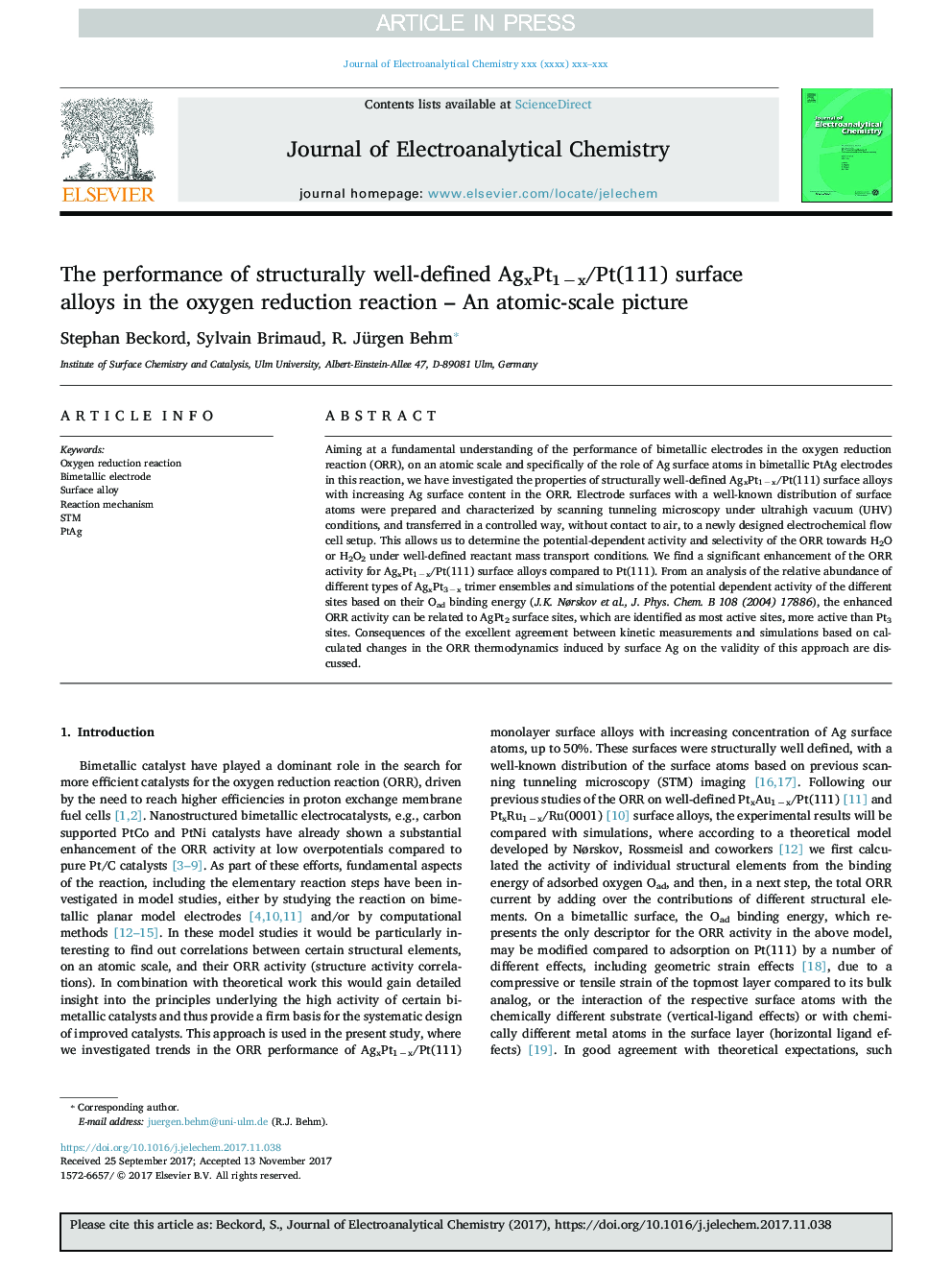| Article ID | Journal | Published Year | Pages | File Type |
|---|---|---|---|---|
| 6661812 | Journal of Electroanalytical Chemistry | 2018 | 9 Pages |
Abstract
Aiming at a fundamental understanding of the performance of bimetallic electrodes in the oxygen reduction reaction (ORR), on an atomic scale and specifically of the role of Ag surface atoms in bimetallic PtAg electrodes in this reaction, we have investigated the properties of structurally well-defined AgxPt1âx/Pt(111) surface alloys with increasing Ag surface content in the ORR. Electrode surfaces with a well-known distribution of surface atoms were prepared and characterized by scanning tunneling microscopy under ultrahigh vacuum (UHV) conditions, and transferred in a controlled way, without contact to air, to a newly designed electrochemical flow cell setup. This allows us to determine the potential-dependent activity and selectivity of the ORR towards H2O or H2O2 under well-defined reactant mass transport conditions. We find a significant enhancement of the ORR activity for AgxPt1âx/Pt(111) surface alloys compared to Pt(111). From an analysis of the relative abundance of different types of AgxPt3âx trimer ensembles and simulations of the potential dependent activity of the different sites based on their Oad binding energy (J.K. Nørskov et al., J. Phys. Chem. B 108 (2004) 17886), the enhanced ORR activity can be related to AgPt2 surface sites, which are identified as most active sites, more active than Pt3 sites. Consequences of the excellent agreement between kinetic measurements and simulations based on calculated changes in the ORR thermodynamics induced by surface Ag on the validity of this approach are discussed.
Related Topics
Physical Sciences and Engineering
Chemical Engineering
Chemical Engineering (General)
Authors
Stephan Beckord, Sylvain Brimaud, R. Jürgen Behm,
